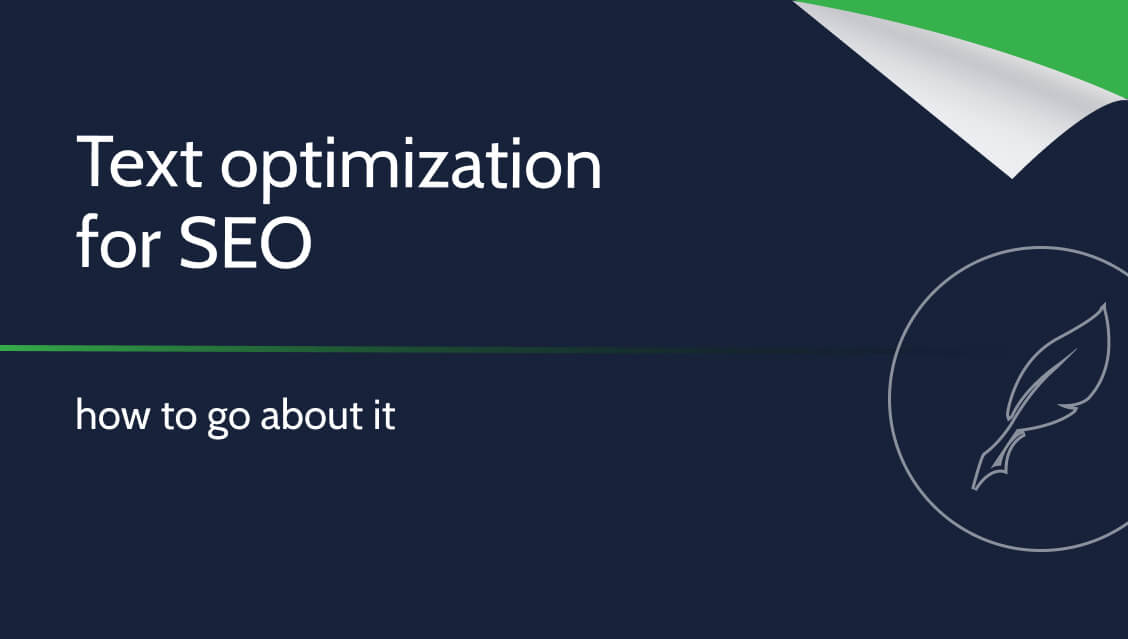Text optimization for SEO – how to go about it

SEO is the primary benefit of professional content creation. For this purpose, SEO optimization is performed, which increases the visibility of contents in Google and other search engines. We describe in this article how exactly this process works.
How does text affect positioning?
SEO potential results from the fact that the content conveys information that may be valuable to search engine users. If this happens, Google bots promote the content by displaying it higher in search results.
Thanks to this, the website begins to generate more traffic, and the search engine – through its usefulness and displaying accurate answers – retains users and builds a competitive advantage. This is a mutual benefit that enables the positioning of texts.
The condition is high quality of information.
Effective SEO texts do not rely on the use of cheap tricks, but on the substantive exhaustion of the topic in order to answer users’ queries.
In this matter, there are no ready-made recipes for success – the result depends on quality, and this can be achieved in various ways.
However, there are permanent actions that have a positive impact on the final positioning effect. They do not concern writing, but optimizing the already created text.
SEO text optimization
This is the final stage in the implementation of texts optimization for SEO. It is preceded by four steps:
- Idea for an article
- Analysis and selection of key phrases
- Structure planning
- Writing the text
- SEO optimization
It is performed when the content already contains key phrases and a hierarchy of headings, and has exhausted the topic described.
Optymalizację tekstu pod SEO wykonuje się za pomocą formatowania oraz linkowania wewnętrznego.
Its purpose is:
- giving an attractive form
- extracting the most important information
- increasing the transparency of the structure
- facilitating website navigation
This, in turn, has a positive impact on the time spent on the website, UX and positioning. The website becomes more interesting for readers and the information is easier for them to remember. In a nutshell, SEO optimization is beneficial for both users and Google robots.
Formatting
Text optimization for SEO involves bolding the most important parts of the text and adding bullet points. This is necessary because reading information is selective and readers are more likely to look for specific answers than to read the entire text.
Tip: After writing your article, check which sentences are particularly important. Conclusion and summary paragraphs should be extracted to convey the essence to more impatient readers. Additionally, determine whether it is possible to present some fragments in the form of a bulleted list (e.g. when you list several things). This form is more transparent and is worth using whenever the opportunity arises.
Internal linking
The pleasant reading of Wikipedia pages (and therefore its success in positioning) results largely from appropriate internal linking. It involves adding links to other articles/subpages that explain in detail the issues discussed in the text. Thanks to this, the user will be able to explore the topic of interest by clicking on a link that will expand the information presented in a given paragraph.
An example is the list of stages of text implementation presented at the beginning of this article. It carries the basic information that was used to provide context for the optimization, and the details are available to interested readers by clicking on the link.
Tip: It is worth doing internal linking on an ongoing basis, so after working on a given issue, update previous articles by adding a link to the new text. We also recommend that when writing the text, you should keep in mind the terms that were previously described on the blog. This will make it easier to integrate them smoothly into the content.
Optimizing text for SEO is the final stage in content creation, which provides measurable benefits with little effort. It should be carried out after writing each article, because it is as important as putting the cherry on the finished cake.
Summary
- SEO optimization increases the clarity of the text and makes it easier to navigate the website. Its final effect is better content visibility in Google.
- It involves formatting and internal linking once the article has been prepared.
- Formatting is intended to highlight the most important sentences and conclusions, and, whenever possible, to arrange information in the form of bullet points.
- Internal linking allows you to reach other articles by adding links in the text. In this way, interested readers are referred to the detailed issues that have already been described.


















Leave a Reply